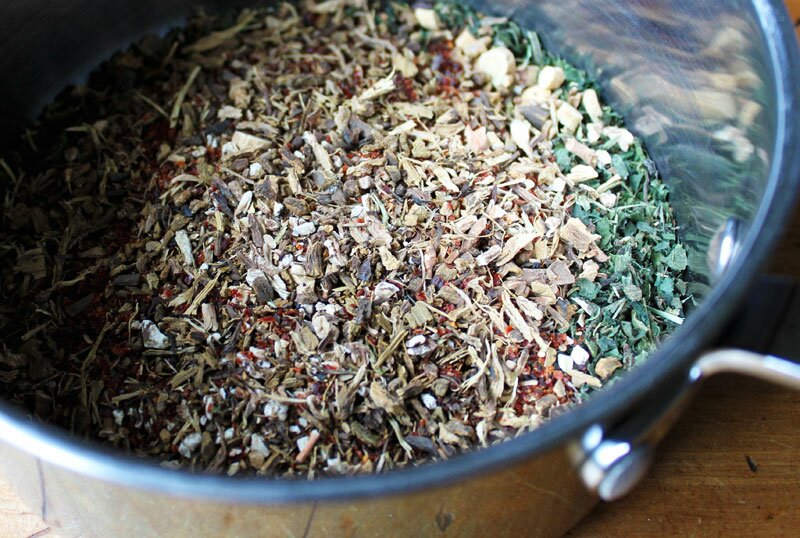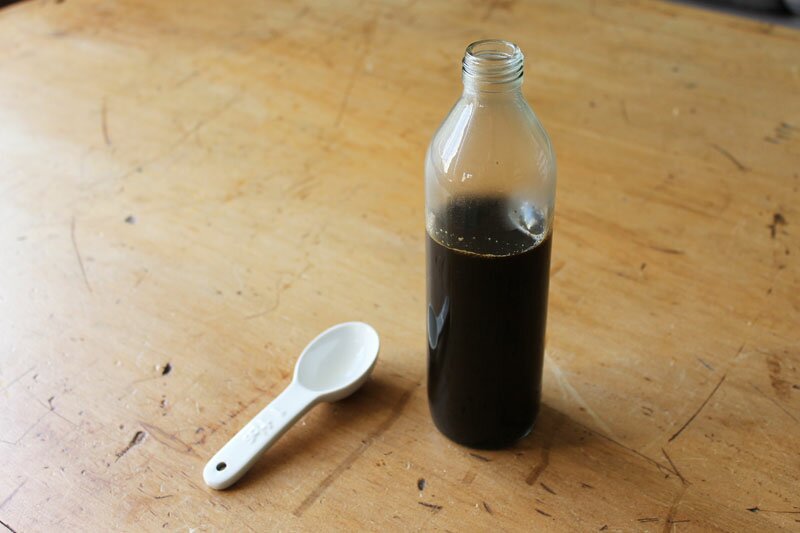This blog post is a follow-up to one I published a few months’ ago called, “On being a woman, period.” I wrote about how I decided to try addressing my iron deficiency issues and menorrhagia through diet and lifestyle in an attempt to balance my hormones, before resorting to synthetic iron supplements, prescription medicines, or (worst-case scenario) physical/surgical intervention. I say ‘before‘, because I was prepared to follow the advice of my doctor if my ‘natural self-healing’ experiment didn’t work (she was sceptical). At the time I wasn’t keen because I felt that she had no interest in identifying a root cause to my problems, whereas the herbalist did. Since Christmas last year, I’ve made major changes to my diet – I quit dairy, gluten, coffee, refined sugar, and I’ve reduced my intake of fructose in general. My husband and I also sold our house, in part to reduce the amount of stress in his and my life. I would like to say that I have made active relaxation and quality sleep a priority, but… we have two little ones under 5 so I’m not entirely convinced that is actually achievable just yet! I do aim to get 8 hours’ sleep each night, which means I usually get around 7. These diet and lifestyle changes were my way of acknowledging the role of my gut and digestive health in regulating my periods, which were debilitatingly heavy, and – I assumed – the cause of my low iron stores, in spite of a very good diet.
I also started seeing a herbalist who gave me some tonics to support my digestive system. Her clinic also has a ready-made iron tonic which I have used in the past and preferred over synthetic iron pills because it doesn’t cause constipation or any other noticeable unwanted side-effects. However, it isn’t particularly cheap (you get what you pay for) and so I decided to have a go at making my own iron tonic in an effort to make the long-term use of it affordable. I’ve been taking a tablespoon of my homemade iron tonic for about 5 months, so a couple of weeks’ ago I decided to get another blood test and see how my iron stores are now.
Before I tell you how that went, I should mention now that my periods have steadily improved since I implemented these changes. They are still heavy, but they are mu—-ch more manageable as I am now losing 2 cups¹ (≈60mL) of blood per cycle LESS than I used to! Considering the average amount of blood lost in a period is 30-40mL, this is a MAJOR improvement and I’m really hoping this is just the beginning of a trend towards ‘normal’ blood loss each month.
So with this exciting improvement in mind, I organised a blood test to check my iron levels. When the nurse at the medical practice called me back to tell me that my iron levels were low and that the GP had left a script for me at the front desk, I’ll admit I was a bit surprised. But how low? I asked her to give me a number, and she said my iron levels were at ‘9’. This was such a disappointment because in January I was at ’11’, meaning my iron stores had actually dropped over the past 6 months, 🙁 ! I was so crushed that ‘natural’ hadn’t worked and that I would have to report back to you that my homemade iron tonic was useless after all. (I cried a bit). I picked up my prescription and dutifully started taking the iron pills. Then a couple of days’ later my blood results arrived in the mail (I always ask them to post a copy of the results to me when they are taking my blood now). What an amazing surprise it was to read that in actual fact my iron stores have gone from ’11’ to ’25’!!!! It’s not perfect (apparently I should be aiming to be at ’80’ to feel fully revived), but it’s definitely headed in the right direction! 😀 😀 😀 When the nurse on the phone said I was now down to ‘9’ she was actually referring to my blood iron levels – this level fluctuates constantly, even throughout the day. It’s hardly surprising that my blood iron levels were low given that I had my blood taken on one of the last days of my period. But my iron stores (ferritin) have doubled and my transferrin levels (transferrin is a protein which transports the iron from your gut to the cells of your body) are now in the normal range. This indicates that my body is able to absorb iron and there is enough for it to build up stores again = all good news 🙂 .
If I claimed I could pinpoint one specific trick that ‘fixed’ my problem I would be lying. I implemented so many changes all at once that I can’t possibly identify what has improved my health. I suspect that all the changes I’ve made have helped in some way to restore something that wasn’t quite right with my digestive system. But I can honestly say to you now that my homemade iron tonic has been effective for me in raising my iron levels as part of a holistic diet-based strategy for regulating my hormones and restoring gut health.
So finally, here is the recipe for my homemade iron tonic. I buy the nettle leaves from the Herbal Shop & Clinic here in Hamilton and the rest of the herbs I buy online from Cottage Hill Herb Farm who are based in Upper Hutt. Their herbs are all organic 🙂 .
The nettle leaves, yellow dock, dandelion root, and blackstrap molasses are all good sources of iron. Rose hips are included for vitamin C. And I’ve added astragalus root for hormone support.
One brew lasts me around 3 to 4 weeks when I take 1Tbsp per day.

Mrs Goodness' Homemade Iron Tonic
Ingredients
- 15 g nettle leaf
- 15 g dandelion root
- 15 g yellow dock root
- 10 g rosehips
- 10 g astragalus root
- ¼ C organic blackstrap molasses
- 2 Tbsp vodka (to preserve)
Instructions
-
Measure out the dried herbs into a small saucepan and cover them with about 500-600mL of boiled (filtered) water. Leave them to steep for approx. 8 hours or overnight.
-
Bring the herbs and liquid to a low simmer and reduce the liquid by half so you have around 250mL left. To strain the herbs out, I drape a piece of muslin cloth over a sieve and pour the hot liquid through and into another saucepan. Let it drain and cool down a bit so that you can squeeze all the liquid out of the herbs.
-
Return the saucepan to a low heat and add 1/4 cup of blackstrap molasses. Stir to dissolve. Remove from heat and add 2Tbsp vodka to preserve. Pour into a sterilised bottle or jar and take 1Tbsp per day.

I’m still a work in progress and I think it will take months for me to build up healthy iron stores but I feel I’m on the right track now. I’m proud that I trusted myself and went down the slow path of whole-body wellness because I believe it’s a sustainable, long-term solution rather than a quick-fix response to my body’s call for help.
PS. You can read about my progress almost two years later in this blog post: https://mrsgoodness.nz/the-good-the-bad-and-the-what-if/
Please be aware that I’m not a qualified health practitioner and I’m not offering advice for anyone else on how best they should manage their health. I am only sharing with you my own experiences and reflecting on how they have affected me. I encourage everyone to take personal responsibility for their own health by prioritising it, making informed decisions, and building a robust support network.
¹ Obviously I’m not referring to metric cups! I use a Sckoon menstrual cup each month, which allows me to monitor my blood loss and track changes in flow (which I do using an app on my phone).
I was iron deficiency for long time, but a year after I started your iron tonic, I’ve checked my iron level and found out my iron level became normal. Thank you so much for sharing your recipe:)
Thank you so much for sharing your positive progress. I’m sure others will feel encouraged to make their own iron tonic now too! I am happy for you that you have been able to improve your iron levels on your own 🙂
Hey, i came across your website as i was looking for an iron syrup for my 8 year old daughter and myself. Our ferritin level was quite low however the GP told us to not worry about it, i decided to take control over our health by having a more natural approach. How much of the iron syrup do you take daily and how often? Is it suitable for children? Thanks for sharing your recipe.
Hi there, I’m sorry this is such a late reply to your question. I stopped using this syrup when I realised I am very sensitive to fructose and I need to keep my sugar intake low to stave off bloating and excessive flatulence (embarrassing to share, but it’s the truth). The syrup contains molasses, which is high in iron, but of course high in fructose. Anyway, last year I discovered I was extremely low in iron (my iron stores were at 9). This was in spite of my excellent diet and attention to iron rich foods. The reason was no surprise – since having children I have suffered from menorrhagia, and I had been trying to manage it naturally, through attention to diet, herbal tonics and the use of a menstrual cup. I realised that the amount of blood I was losing each month could not be compensated for through diet, so I have accepted medical intervention to manage it. This needs to be outlined in an actual blog post (which is why I didn’t reply straight away – I need time to process and prepare this future post!) BUT I’ve mentioned it here to illustrate that I think it’s important to pay attention to figuring out the CAUSE of a symptom like iron deficiency even while you are trying to manage and improve the symptom either naturally or with medical assistance. I think it is interesting that an 8 year old is low in iron? I guess if you’re not too concerned and you just want to get a bit more iron into your diets then personally I think the most effective and lowest risk approach for a child is LIVER. I make pate regularly, as a way of getting liver into the kids in a way they LOVE. Also the iron in liver is much more bioavailable than iron you would get from plant based sources. I hope this helps somewhat!
Hibiscus is extremely high in iron!!